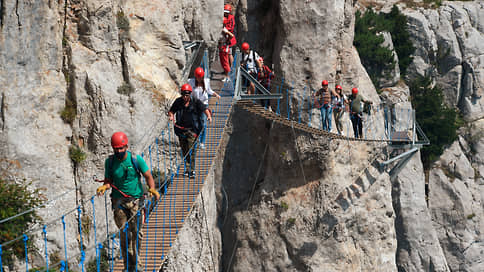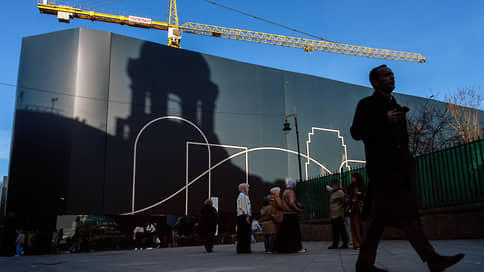A bill on pedestrian tourist paths has been submitted to the State Duma

Legislators have taken up the regulation of pedestrian tourist trails: the existing will be equipped, an operator will be appointed for each of them. New paths will be banned to lay defense and agricultural lands on lands. These and other norms are contained in the draft law, which was introduced to the State Duma by the interfraction group of deputies. Now in Russia there are almost 2 thousand different paths, in the future there will be even more, this sphere needs to be resolved, the authors of the document say. Experts supported the project, but called not to introduce excess restrictions on the movement of citizens in crossed areas.
A package of amendments to the law “On the Fundamentals of Tourism”, a group of deputies, the forest and land codes to the State Duma, was introduced by a group of deputies, including the Vice-Spiker Victoria Abramchenko (EP), the head of the Duma Tourism Committee of Sangrya Tarbaeva (“New People”) and Artem Prokofiev (PRC). The document for the first time introduces detailed regulation of pedestrian tourist trails. Such objects will be combined into a single “national system”, information about them will be collected in the public federal register. The bill was developed on behalf of President Vladimir Putin.
The process of creating and maintaining tourist trails today is not settled today, while there are more and more objects annually, the explanatory note says.
According to the agency of strategic initiatives, now there are more than 1.7 thousand trails in 79 constituent entities of the Federation. Most of all-in the Volga (407) and the Siberian Federal District (358), the least in the North Caucasus (55) and the Ural Federal District (51). 59% of all paths have a length of 5–20 km, 18% – 20–40 km, 12% – 40–100 km, 7% – 100-200 km. 4% of the routes stretched over a distance of more than 200 km (see Help “Kommersant”). At the same time, there are no single trail system, as well as the rules for managing them, parliamentarians write, and this leads to the « irrational use of the natural resources themselves. » The lack of regulation interferes with the development of the network: the deputies recall that back in 2022, Vladimir Putin instructed the government to organize 1 thousand new pedestrian routes.
The draft law for the first time deciphers the concept of “tourist path”: this is a “resource” intended for foot, bicycle, ski, equestrian or “other nonsense method of movement”, located on lands, artificial structures and water bodies, equipped with a navigation and orientation system.
On certain parts of the route, it will be allowed to place non -capital buildings and structures. Each path will have a passport (including its name, length, description of “values” and other data) and the operator (private company or authority). After the adoption of the law, the federal authorities will approve the list of non -capital buildings and structures that can be placed on the path, as well as the requirements for navigation. All routes will be divided into federal (passing through the territory of two or more regions), regional (passing through the territory of two or more municipalities) and municipal, as well as paths located in specially protected natural areas.
A new path can be created on the initiative of the authorities or private companies. At the same time, it will be forbidden to lay paths along the lands of defense, security, as well as on agricultural land. To create paths, it will be allowed to use the areas of the forest, if the trees are not cut down.
The bill will not only improve the quality of existing routes, but also stimulate the development of new ones, wrote Victoria Abramchenko in the Telegram channel: “The implementation of this task will open up new opportunities for domestic tourism and allow more people to enjoy the natural wealth of our country. The adoption of the law will be an important step in the development of tourism, opening new horizons to the travelers and strengthening the position of Russia as an attractive direction for outdoor activities. ”
The Ministry of Economy called the bill “expected in connection with the growth of citizens’ interest in active tourism”: “With its adoption, it will be possible to systematically develop this popular direction, create, equip, operate tourist paths and objects of the concomitant service,” Kommersant said in the department. “The main thing is to solve, these are issues of land use and the possibility of subjects and municipalities spend funds for the creation and arrangement of paths. We are ready to submit our proposals in the framework of the official review, as well as the proposal for the finalization of the second reading. ”
“The initiative is useful, this segment of the tourism industry is now developing,” commented on the bill by the Vice-President of the Association of Tour operators of Russia (ATOR) Sergey Romashkin. “The main problems are related to the lack of regulation on long interregional paths. For example, a project of the Transkavkaz trail passing through 7-8 regions is now being implemented. In places there are very tall and complex passes in the mountains. All this should be safe and equipped. ” The expert emphasizes that now many paths are contained by volunteers at their own expense, so it is important that each object has a separate operator. “I support the restriction related to the placement of stationary objects on the route, without this stalls and catering will appear there,” adds Mr. Romashkin. “I note the norm prohibiting the trees to the path in the forest. Now this practice, unfortunately, exists. ”
“Conceptually, the bill should be supported, but I consider the ban on the organization of paths on agricultural vehicles that the laid in it,” says Anton Khlynov, an expert at the Public Council under the Rosleskhoz. “The position of the legislator is understandable, this is a kind of insurance against the abuse of copyright holders regarding the improper use of land. But if we are talking about hayfields (meadows) or pastures, through which, for example, it is advisable to lay the path along existing paths or field roads, why not allow you to designate and equip the path by designing a public easement? ” The authors should more clearly prescribe that the regulation of activities on the installation and maintenance of routes does not lead to the introduction of additional restrictions on the movement of citizens in crossed terrain, Mr. Khlynov says: “It should not be so that all the abundance of citizens visiting forests, fields, fields of rivers, lakes and seas, mountains and other natural and cultural landscapes were allowed to walk exclusively according to the equipped paths. There are enough existing restrictions on visiting a number of territories – there are enough forests in the fire hazard. ”








